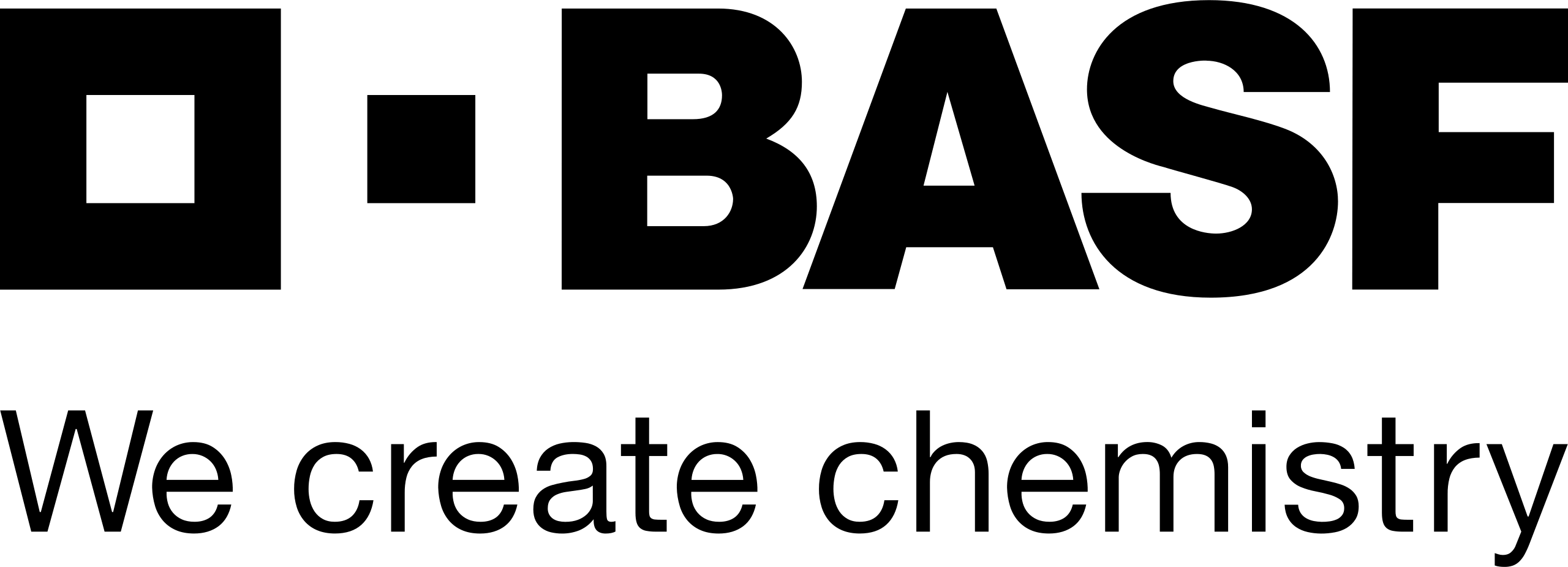Global Biodegradable Polymers Market By Origin, By Type, By End User, By Region & Segmental Insights Trends and Forecast, 2024 – 2034
- Industry: Chemicals & Materials
- Report ID: TNR-110-1076
- Number of Pages: 420
- Table/Charts : Yes
- May, 2024
- Base Year : 2024
- No. of Companies : 10+
- No. of Countries : 29
- Views : 10215
- Covid Impact Covered: Yes
- War Impact Covered: Yes
- Formats : PDF, Excel, PPT
In Terms of Revenue, the Global Biodegradable Polymers Market was Worth US$ 8.4 Bn in 2023 and is Anticipated to Witness a CAGR of 21.1% During 2024 – 2034. Renewable sourcing, environmental regulations, consumer demand for eco-friendly products, technological advancements, waste reduction initiatives, increased awareness of plastic pollution, sustainability goals of companies, government incentives, innovation in biopolymer formulations are key growth drivers in the biodegradable polymers market.

Global Biodegradable Polymers Market Dynamics
Consumer Demand For Sustainable Solutions
Consumer demand for sustainable solutions is a pivotal growth driver in the biodegradable polymers market. As awareness of environmental issues escalates, consumers are actively seeking products with reduced ecological footprints.
Biodegradable polymers offer an eco-friendly alternative to traditional plastics, aligning with consumer preferences for environmentally conscious choices. This growing demand incentivizes companies to invest in biopolymer research, development, and production, driving innovation and market expansion. As a result, the consumer-driven push for sustainability plays a significant role in shaping the trajectory of the biodegradable polymers market, positioning it as a vital component of the broader shift towards a greener economy.

Trends: Growing Shift Towards Sustainable Practices
The biodegradable polymers market is witnessing a surge driven by environmental concerns and regulatory pressures. With a growing shift towards sustainable practices, industries are increasingly adopting biodegradable polymers as alternatives to conventional plastics. Consumer demand for eco-friendly products is pushing manufacturers to innovate in this space, driving research and development investments. From packaging to medical devices, biodegradable polymers are gaining traction across various sectors.
Advancements in technology are enhancing the performance and scalability of these materials, making them more viable for widespread use. As awareness about environmental issues continues to rise, the biodegradable polymers market is poised for significant growth.
 Challenges: Cost-Effectiveness And Scalability
Challenges: Cost-Effectiveness And Scalability
Despite their promising benefits, the biodegradable polymers market faces challenges related to cost-effectiveness and scalability. The production of biodegradable polymers often requires specialized processes and raw materials, which can drive up manufacturing costs.
Additionally, achieving consistent quality and performance standards while maintaining biodegradability poses technical challenges. Limited infrastructure for composting and recycling also hinders widespread adoption. Furthermore, there’s a need for clearer regulations and standards to ensure the effectiveness and safety of biodegradable polymers. Overcoming these challenges requires continued research, innovation, and collaboration across industries to make biodegradable polymers economically feasible and environmentally sustainable.
Biodegradable Polymers Market Segmentation by Origin, Type, End User and Region
 The natural segment is poised to assert its dominance in the biodegradable polymers market, boasting a substantial revenue share of 58.3% over the forecast period. Derived from renewable sources such as starch, cellulose, and plant oils, natural biodegradable polymers offer several advantages over synthetic counterparts. They exhibit superior biodegradability, minimizing environmental impact and reducing dependence on finite resources.
The natural segment is poised to assert its dominance in the biodegradable polymers market, boasting a substantial revenue share of 58.3% over the forecast period. Derived from renewable sources such as starch, cellulose, and plant oils, natural biodegradable polymers offer several advantages over synthetic counterparts. They exhibit superior biodegradability, minimizing environmental impact and reducing dependence on finite resources.
Additionally, natural polymers often boast biocompatibility and non-toxicity, making them suitable for a wide range of applications, including packaging, agriculture, and biomedical devices. Growing awareness of plastic pollution and stringent regulations on single-use plastics further fuel demand for natural biodegradable polymers. Moreover, technological advancements in processing techniques enhance the performance and versatility of natural polymers, expanding their market reach. As sustainability becomes a paramount concern for consumers and industries alike, the natural segment is positioned to sustain its dominance, driving the biodegradable polymers market forward.
 In 2023, Asia Pacific is anticipated to play a significant role in propelling the growth of the biodegradable polymers market, contributing approximately 32.3% to its overall expansion. Rapid industrialization, urbanization, and population growth in countries like China, India, and Japan have led to heightened awareness of plastic pollution and the need for eco-friendly alternatives. Government initiatives promoting the adoption of biodegradable polymers, coupled with growing consumer demand for sustainable products, are driving market expansion in the region.
In 2023, Asia Pacific is anticipated to play a significant role in propelling the growth of the biodegradable polymers market, contributing approximately 32.3% to its overall expansion. Rapid industrialization, urbanization, and population growth in countries like China, India, and Japan have led to heightened awareness of plastic pollution and the need for eco-friendly alternatives. Government initiatives promoting the adoption of biodegradable polymers, coupled with growing consumer demand for sustainable products, are driving market expansion in the region.
Moreover, Asia Pacific’s robust manufacturing infrastructure and investment in research and development facilitate the production and innovation of biodegradable polymers. With a significant contribution of approximately 32.3% to the market’s overall expansion in 2023, Asia Pacific emerges as a key player in shaping the future of the biodegradable polymers industry.
Key Developments
- In May 2022, NatureWorks and CJ Bio inked a partnership to bring innovative biopolymer solutions to market. Their collaboration aims to manufacture advanced biopolymers by leveraging NatureWorks’ Ingeo biomaterials technology and CJ Bio’s expertise in polyhydroxyalkanoate (PHA). The joint effort targets the development of high-performance biopolymers tailored for applications spanning food packaging, personal care, and beyond.
Major Players in Biodegradable Polymers Market
- BASF SE
- Biome Technologies plc
- BIOTEC Biologische Naturverpackungen GmbH & Co. KG
- Danimer Scientific
- DuPont
- Eastman Chemical Company
- FKuR
- Merck KGaA
- Mitsubishi Chemical Group Corporation
- NatureWorks LLC
- Novamont S.p.A.
- TEIJIN LIMITED
- Total Corbion PLA
- Other Industry Participants
Global Biodegradable Polymers Market: Key Highlights
| Report Specifications | Details |
| Market Revenue in 2023 | US$ 8.4 Bn |
| Market Size Forecast by 2034 | US$ 68.6 Bn |
| Growth Rate (CAGR) | 21.1% |
| Historic Data | 2016 – 2022 |
| Base Year for Estimation | 2023 |
| Forecast Period | 2024 – 2034 |
| Report Inclusions | Market Size & Estimates, Market Dynamics, Competitive Scenario, Trends, Growth Factors, Market Determinants, Key Investment Segmentation, Product/Service/Solutions Benchmarking |
| Segments Covered | By Origin, By Type, By End User, By Region |
| Regions Covered | North America, Europe, Asia Pacific, Middle East & Africa, Latin America |
| Countries Covered | U.S., Canada, Mexico, Rest of North America, France, The UK, Spain, Germany, Italy, Nordic Countries (Denmark, Finland, Iceland, Sweden, Norway), Benelux Union (Belgium, The Netherlands, Luxembourg), Rest of Europe, China, Japan, India, New Zealand, Australia, South Korea, Southeast Asia (Indonesia, Thailand, Malaysia, Singapore, Rest of Southeast Asia), Rest of Asia Pacific, Saudi Arabia, UAE, Egypt, Kuwait, South Africa, Rest of Middle East & Africa, Brazil, Argentina, Rest of Latin America |
| Key Players | BASF SE, Biome Technologies plc, BIOTEC Biologische Naturverpackungen GmbH & Co. KG, Danimer Scientific, DuPont, Eastman Chemical Company, FKuR, Merck KGaA, Mitsubishi Chemical Group Corporation, NatureWorks LLC, Novamont S.p.A., TEIJIN LIMITED |
| Customization Scope | Customization allows for the inclusion/modification of content pertaining to geographical regions, countries, and specific market segments. |
| Pricing & Procurement Options | Explore purchase options tailored to your specific research requirements |
| Contact Details | Consult With Our Expert
Japan (Toll-Free): +81 663-386-8111 South Korea (Toll-Free): +82-808- 703-126 Saudi Arabia (Toll-Free): +966 800-850-1643 United Kingdom: +44 753-710-5080 United States: +1 302-232-5106 E-mail: askanexpert@thenicheresearch.com
|
Global Biodegradable Polymers Market:
By Origin
- Natural
- Synthetic
By Type
- Starch-based Polymers
- Polylactic Acid (PLA)
- Polyhydroxy Alkanoates (PHA)
- Polyesters
- Others
By Application
- Packaging
- Textile
- Agriculture
- Healthcare
- Consumer Goods
- Others
By Region
- North America (U.S., Canada, Mexico, Rest of North America)
- Europe (France, The UK, Spain, Germany, Italy, Nordic Countries (Denmark, Finland, Iceland, Sweden, Norway), Benelux Union (Belgium, The Netherlands, Luxembourg), Rest of Europe)
- Asia Pacific (China, Japan, India, New Zealand, Australia, South Korea, Southeast Asia (Indonesia, Thailand, Malaysia, Singapore, Rest of Southeast Asia), Rest of Asia Pacific)
- Middle East & Africa (Saudi Arabia, UAE, Egypt, Kuwait, South Africa, Rest of Middle East & Africa)
- Latin America (Brazil, Argentina, Rest of Latin America)
Report Layout:

Table of Contents
Note: This ToC is tentative and can be changed according to the research study conducted during the course of report completion.
**Exclusive for Multi-User and Enterprise User.
Global Biodegradable Polymers Market
By Origin
- Natural
- Synthetic
By Type
- Starch-based Polymers
- Polylactic Acid (PLA)
- Polyhydroxy Alkanoates (PHA)
- Polyesters
- Others
By Application
- Packaging
- Textile
- Agriculture
- Healthcare
- Consumer Goods
- Others
By Region
- North America (U.S., Canada, Mexico, Rest of North America)
- Europe (France, The UK, Spain, Germany, Italy, Nordic Countries (Denmark, Finland, Iceland, Sweden, Norway), Benelux Union (Belgium, The Netherlands, Luxembourg), Rest of Europe)
- Asia Pacific (China, Japan, India, New Zealand, Australia, South Korea, Southeast Asia (Indonesia, Thailand, Malaysia, Singapore, Rest of Southeast Asia), Rest of Asia Pacific)
- Middle East & Africa (Saudi Arabia, UAE, Egypt, Kuwait, South Africa, Rest of Middle East & Africa)
- Latin America (Brazil, Argentina, Rest of Latin America)
The Niche Research approach encompasses both primary and secondary research methods to provide comprehensive insights. While primary research is the cornerstone of our studies, we also incorporate secondary research sources such as company annual reports, premium industry databases, press releases, industry journals, and white papers.
Within our primary research, we actively engage with various industry stakeholders, conducting paid interviews and surveys. Our meticulous analysis extends to every market participant in major countries, allowing us to thoroughly examine their portfolios, calculate market shares, and segment revenues.
Our data collection primarily focuses on individual countries within our research scope, enabling us to estimate regional market sizes. Typically, we employ a bottom-up approach, meticulously tracking trends in different countries. We analyze growth drivers, constraints, technological innovations, and opportunities for each country, ultimately arriving at regional figures.Our process begins by examining the growth prospects of each country. Building upon these insights, we project growth and trends for the entire region. Finally, we utilize our proprietary model to refine estimations and forecasts.
Our data validation standards are integral to ensuring the reliability and accuracy of our research findings. Here’s a breakdown of our data validation processes and the stakeholders we engage with during our primary research:
- Supply Side Analysis: We initiate a supply side analysis by directly contacting market participants, through telephonic interviews and questionnaires containing both open-ended and close-ended questions. We gather information on their portfolios, segment revenues, developments, and growth strategies.
- Demand Side Analysis: To gain insights into adoption trends and consumer preferences, we reach out to target customers and users (non-vendors). This information forms a vital part of the qualitative analysis section of our reports, covering market dynamics, adoption trends, consumer behavior, spending patterns, and other related aspects.
- Consultant Insights: We tap into the expertise of our partner consultants from around the world to obtain their unique viewpoints and perspectives. Their insights contribute to a well-rounded understanding of the markets under investigation.
- In-House Validation: To ensure data accuracy and reliability, we conduct cross-validation of data points and information through our in-house team of consultants and utilize advanced data modeling tools for thorough verification.
The forecasts we provide are based on a comprehensive assessment of various factors, including:
- Market Trends and Past Performance (Last Five Years): We accurately analyze market trends and performance data from preceding five years to identify historical patterns and understand the market’s evolution.
- Historical Performance and Growth of Market Participants: We assess the historical performance and growth trajectories of key market participants. This analysis provides insights into the competitive landscape and individual company strategies.
- Market Determinants Impact Analysis (Next Eight Years): We conduct a rigorous analysis of the factors that are projected to influence the market over the next eight years. This includes assessing both internal and external determinants that can shape market dynamics.
- Drivers and Challenges for the Forecast Period:Identify the factors expected to drive market growth during the forecast period, as well as the challenges that the industry may face. This analysis aids in deriving an accurate growth rate projection.
- New Acquisitions, Collaborations, or Partnerships: We keep a close watch on any new acquisitions, collaborations, or partnerships within the industry. These developments can have a significant impact on market dynamics and competitiveness.
- Macro and Micro Factors Analysis:A thorough examination of both macro-level factors (e.g., economic trends, regulatory changes) and micro-level factors (e.g., technological advancements, consumer preferences) that may influence the market during the forecast period.
- End-User Sentiment Analysis: To understand the market from the end-user perspective, we conduct sentiment analysis. This involves assessing the sentiment, preferences, and feedback of the end-users, which can provide valuable insights into market trends.
- Perspective of Primary Participants: Insights gathered directly from primary research participants play a crucial role in shaping our forecasts. Their perspectives and experiences provide valuable qualitative data.
- Year-on-Year Growth Trend: We utilize a year-on-year growth trend based on historical market growth and expected future trends. This helps in formulating our growth projections, aligning them with the market’s historical performance.
Research process adopted by TNR involves multiple stages, including data collection, validation, quality checks, and presentation. It’s crucial that the data and information we provide add value to your existing market understanding and expertise. We have also established partnerships with business consulting, research, and survey organizations across regions and globally to collaborate on regional analysis and data validation, ensuring the highest level of accuracy and reliability in our reports.















